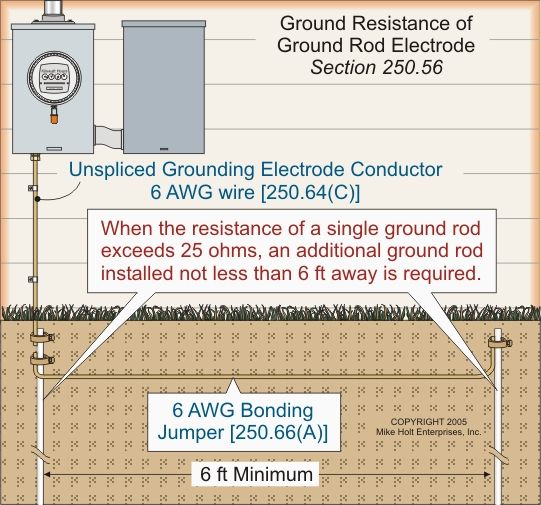250.64(C) requires the grounding electrode conductor(s) to be installed in one continuous length without a splice or joint....
If the resistance to ground of the single electrode is less than 25 ohms it shall be augmented by one additional electrode. If a second electrode is required, does 250.64(C) still apply? I'm arguing the point that only the first electrode is required to have a grounding electrode conductor that is unspliced and that you don't have to replace the first conductor with one that goes all the way from the panel to the second electrode. I'm thinking the conductor to the second electrode from the first is a bonding jumper and not a grounding electrode conductor. I'm in Afghanistan so we're using the 2008 NEC. Any comments?
If the resistance to ground of the single electrode is less than 25 ohms it shall be augmented by one additional electrode. If a second electrode is required, does 250.64(C) still apply? I'm arguing the point that only the first electrode is required to have a grounding electrode conductor that is unspliced and that you don't have to replace the first conductor with one that goes all the way from the panel to the second electrode. I'm thinking the conductor to the second electrode from the first is a bonding jumper and not a grounding electrode conductor. I'm in Afghanistan so we're using the 2008 NEC. Any comments?



